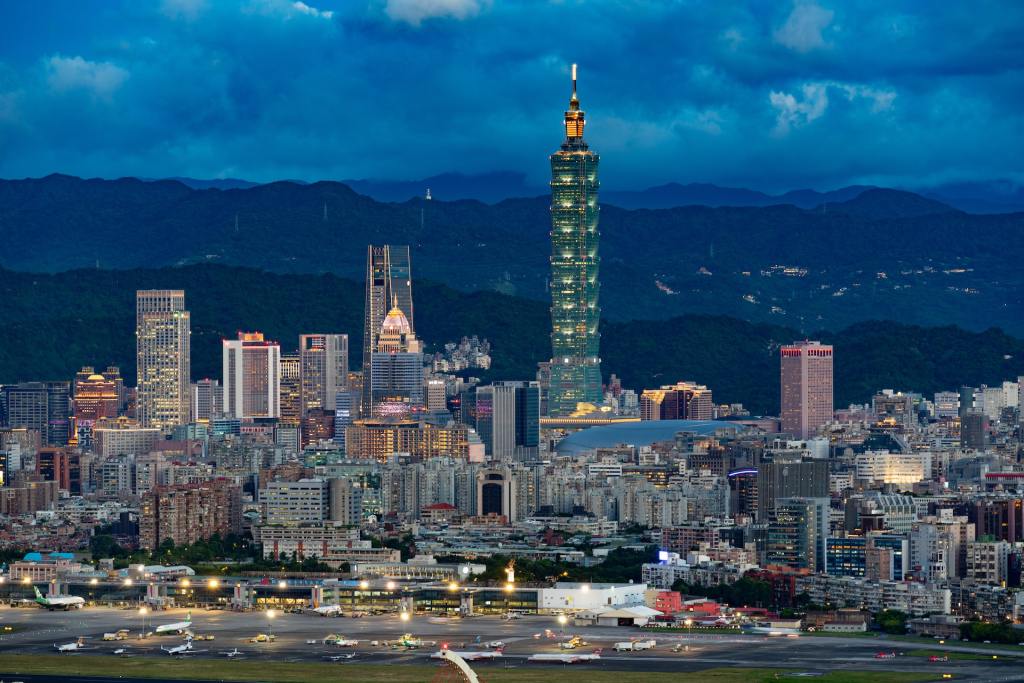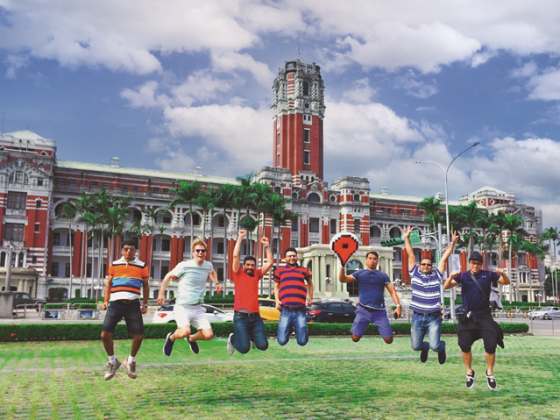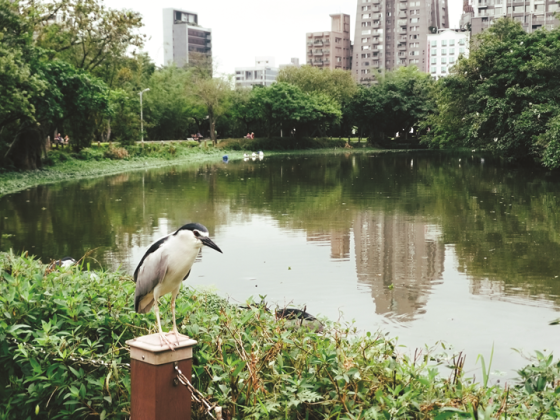Over the past few years, one of the main reasons Taiwan has managed to keep the spread of COVID-19 at bay has been its strict quarantine regulations imposed on people entering the country. Restrictions are now, at last, being eased in two phases. The first will take effect September 29. If all goes well, the second is tentatively scheduled go into force on October 13.
Below are some of the most common questions being asked about the new entry rules. Questions 1~5 deal with the first phase. Questions 6~11 deal with the second phase.
1. What are the key changes in the first stage, starting September 29?
The first stage will start at 00:00 on September 29, based on the arrival time for an incoming flight.
The weekly cap on international visitor arrivals is being raised from the current 50,000 to 60,000. The deep-throat saliva PCR tests now mandatory upon arrival are being cancelled. Arriving travelers will instead be given four rapid antigen test kits — no test using one of these kits is required on-site at your port of entry. A “3+4” policy will be in effect; i.e., an arriving traveler must quarantine for the first three full days in Taiwan, adhering to the rule of one person per room during this period, followed by four days of self-monitoring.
Prior to the pandemic Taiwan had a visa-waiver program with 65 countries. This will now be resumed. Travelers from countries not granted visa-waiver treatment shall be allowed to apply for entry visas for regular social visits and tourism. As well, the ban on tour groups will be lifted.
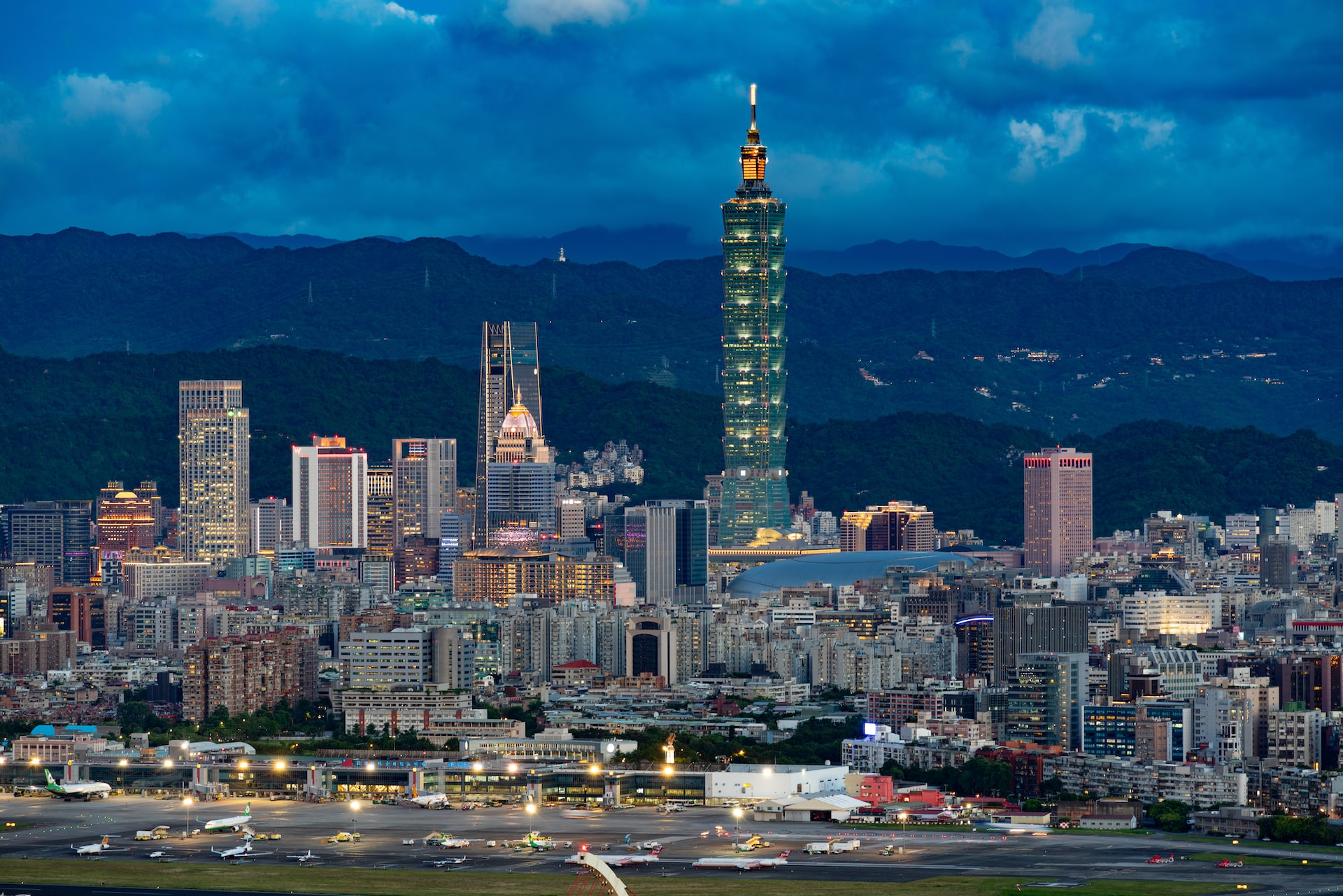
2. How do I find a quarantine hotel?
• Quarantine hotels in Taipei City: click here.
• Quarantine hotels across Taiwan: click here.
A friendly reminder: Double check with the hotel you’d like to book by phone or email to check availability.
Another reminder: There are several websites that coordinate all the quarantine hotels in Taiwan, such as AsiaYO, 14Holidays and Taipei Traveler. Their booking system is in Chinese, however….
3. Can You Rent an Apartment or Suite or Stay at a Company’s Dormitory for Your Quarantine?
Yes for dorms, as long as there is nobody else living there at the time or you have your own room and bathroom separate from others who are also quarantining. You cannot quarantine at short-term apartment rentals, including Airbnbs.
4. How Do I Get from My Place of Arrival to My Quarantine Location?
You can take a quarantine taxi, drive yourself, or get a ride from a friend, relative, or your company or organization.
At Taiwan Taoyuan International Airport, go to the airport taxi counter to access special taxis using pandemic prevention measures, ensuring the driver is safe from potential infection. The average price for a one-way trip from the airport to Taipei City is about NT$1,000 (charged by meter). If your quarantine hotel is in Kaohsiung, it will cost you around NT$2,700 from the Taoyuan airport.

5. What Is the Punishment for Breaking Quarantine in Taiwan?
You will be fined, anywhere from NT$100,000 to NT$1 million. This includes your ride from the airport to your quarantine location – you are not permitted to take public transportation.
6. What are the key changes in the second stage, set to start October 13?
The second stage will start at 00:00 on October 13, based on the arrival time for an incoming flight.
The cap on weekly arrivals will be further lifted to 150,000. No post-arrival quarantine period will be required. Instead, a “0+7” policy will go into effect. This means 0 days of quarantine and 7 days of “self-initiated epidemic prevention” monitoring.
A COVID-19 Health Declaration and Home Quarantine Notice will no longer be issued to arriving travelers at their port of entry. Arrivals free of COVID-19 symptoms can take public transportation from their port of entry.
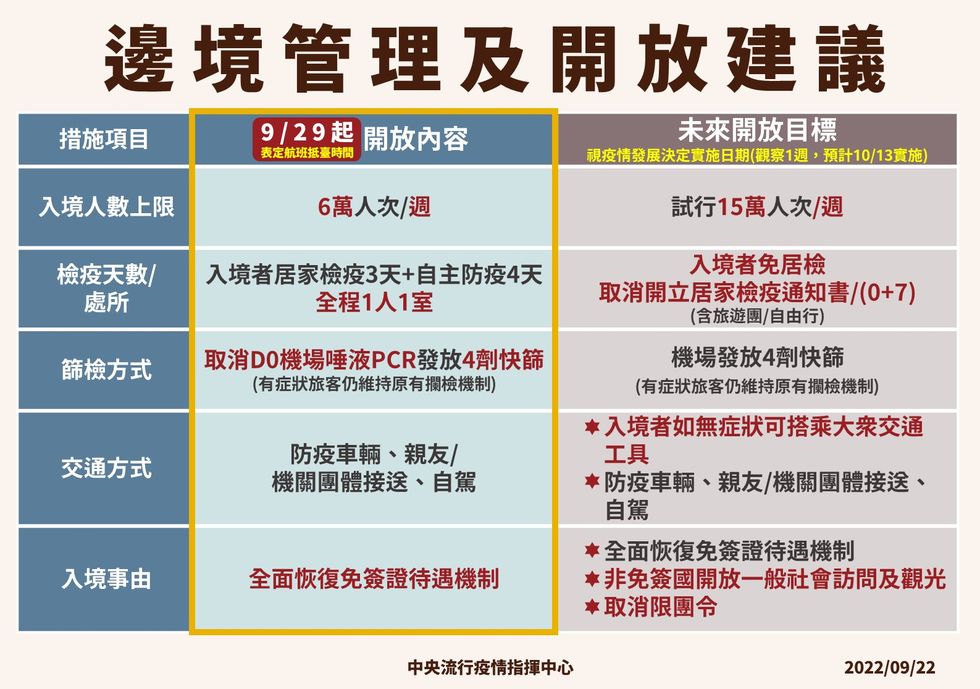
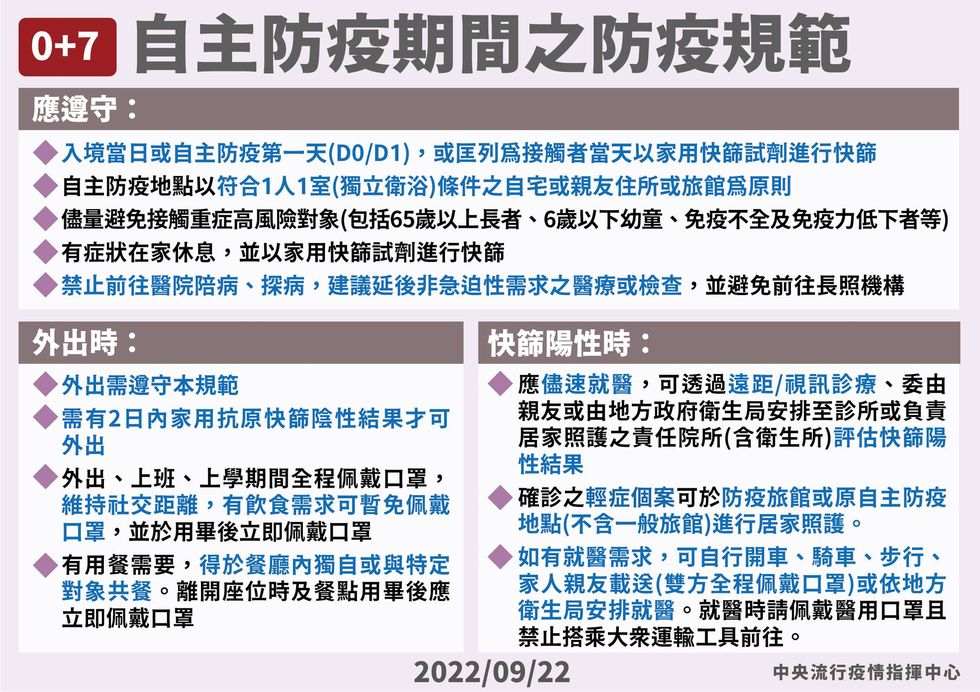
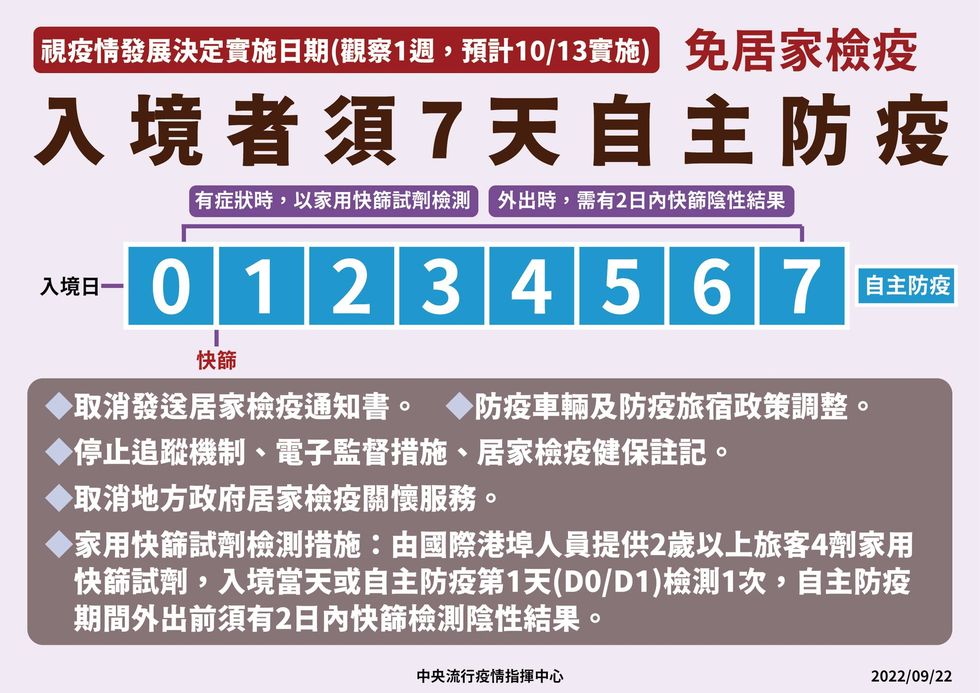
7. When do I use my rapid tests?
The day of your arrival is considered Day 0, the next day Day 1 of your self-monitoring period. Use your first rapid antigen test on either Day 0 or Day 1. After this, use a rapid test at your place of stay during the self-monitoring period if you wish to go out, permitted only if you have had a negative result within the past two days. Finally, use a rapid test at your place of stay if you develop symptoms.
8. What if I am traveling with children?
A total of four rapid test kits will be given to each arrival aged 2 or older at the port of entry. There is no requirement for the use of rapid tests with children aged 2 and under during the 7-day self-monitoring period.
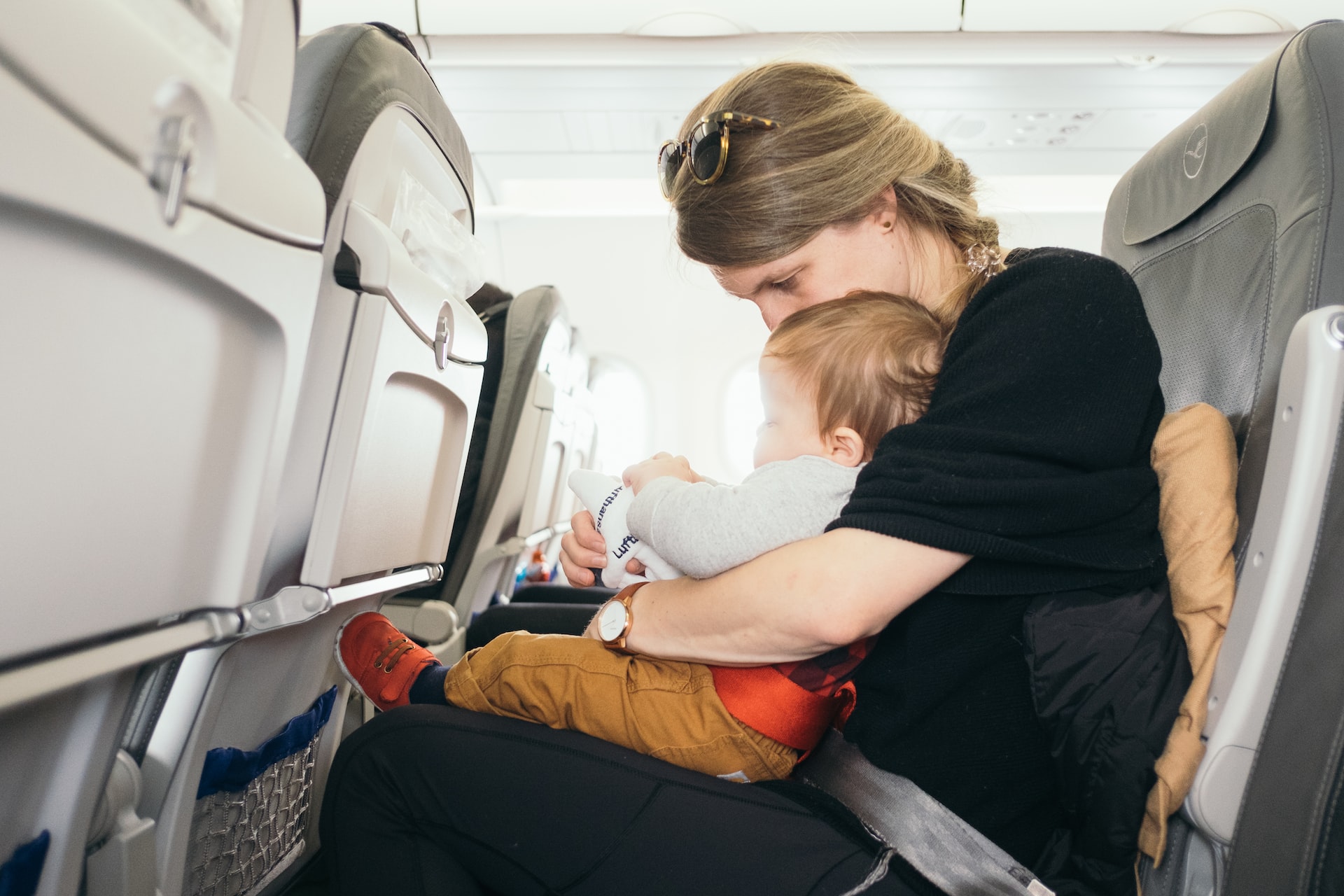
9. Where am I permitted to reside during my self-monitoring period?
Arrivals are advised to stay at home, the residence of a family member or friend, or in a hotel room that meets the “one person per room” requirement (with an ensuite bathroom).
10. Are there restrictions on my movement and contacts during the self-monitoring period?
If going out, a mask must be worn at all times, and social distancing should be practiced. If going out to eat at a restaurant, whether alone or with acquaintances, one’s dining space should be separate from others. You can temporarily remove your mask when eating but should immediately put it back on if you leave your seat anytime while dining and when you finish.
Arrivals should avoid any contact with individuals at risk of developing severe COVID-19. This means, in particular, seniors 65 and over, children six and under, and those with weak immune systems or who are immunocompromised.
Specific places arrivals are not to visit are hospitals (unless there to seek urgent medical help for yourself) and long-term care facilities. Non-urgent medical services or examinations should be rescheduled/postponed.
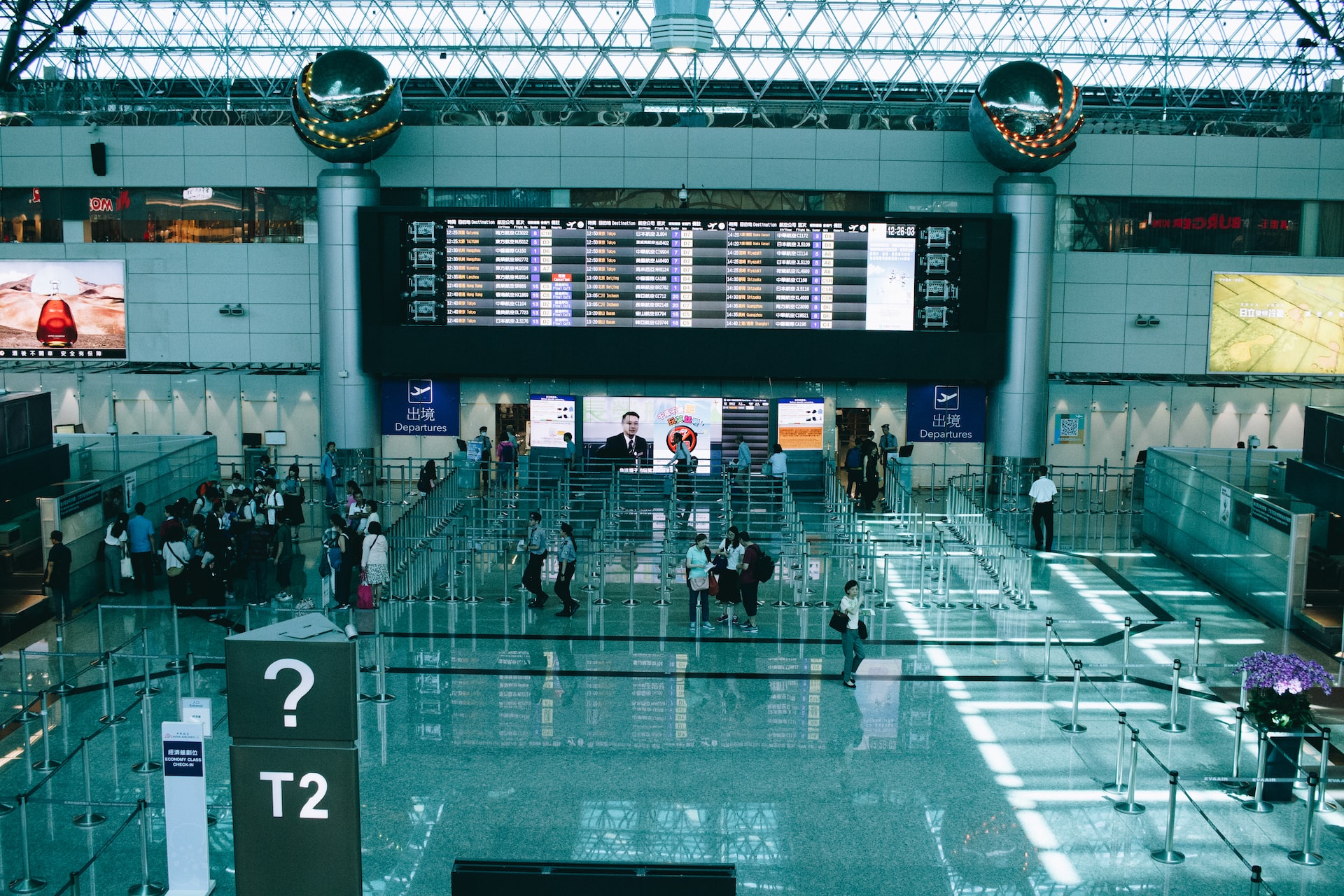
11. What if I experience symptoms/test positive for COVID-19?
If your symptoms are not serious, rest at home. If staying at a general hotel, you must switch to a designated quarantine hotel. Individuals with mild symptoms can receive home care both at home and at a quarantine hospital.
Author Rick Charette

